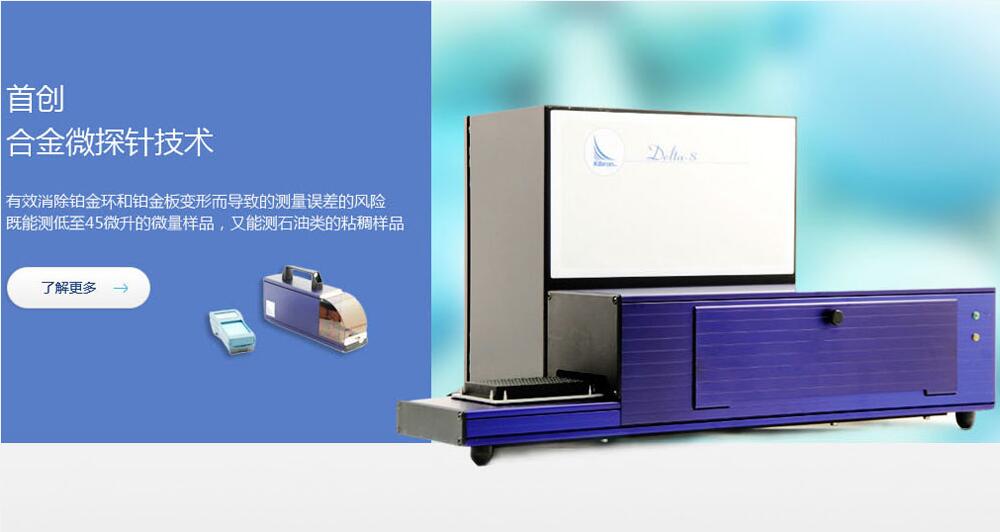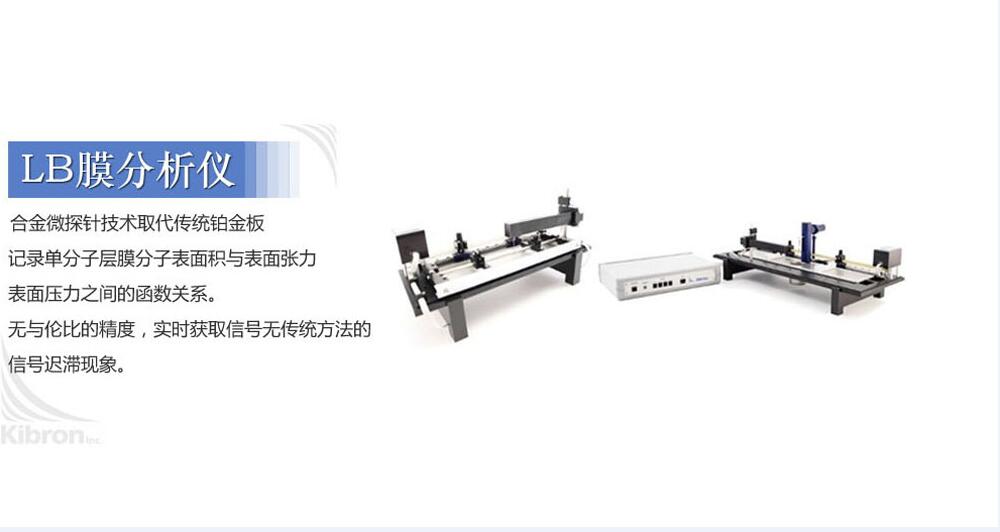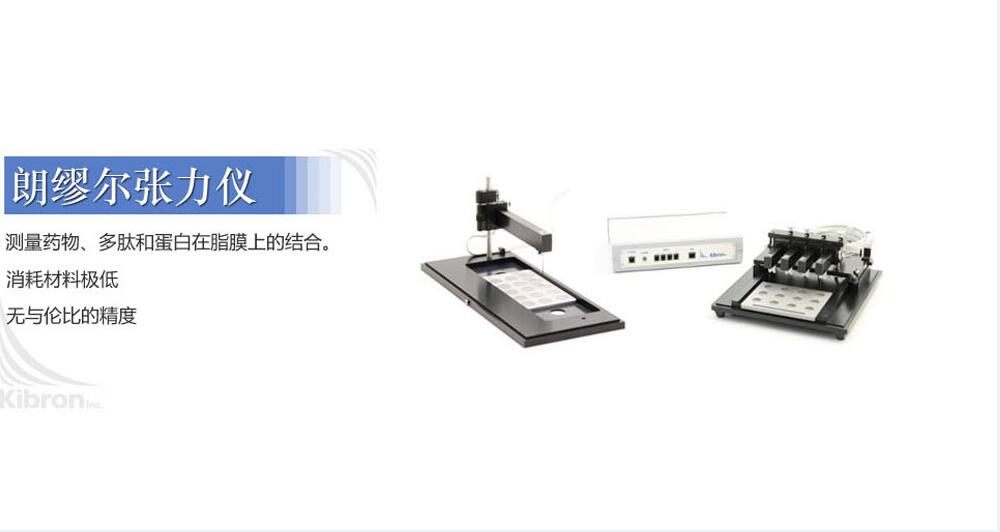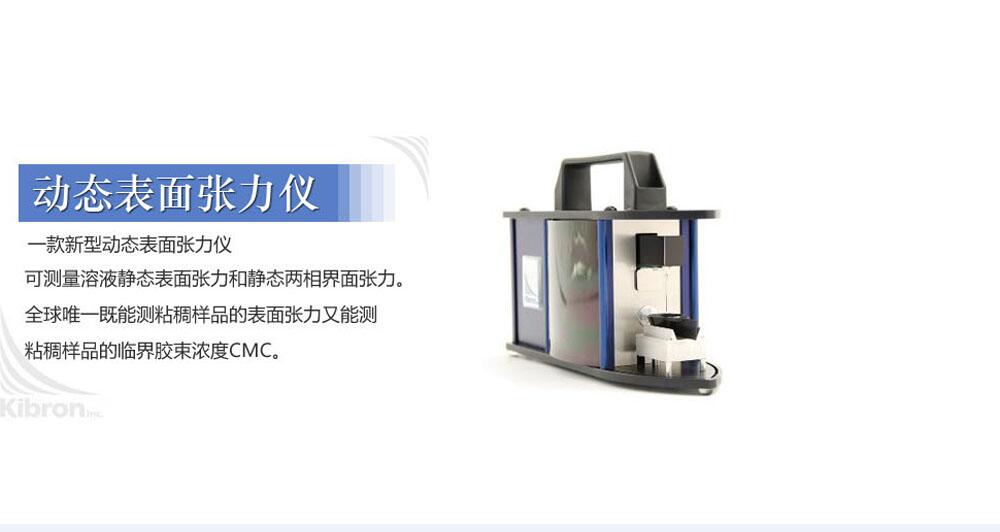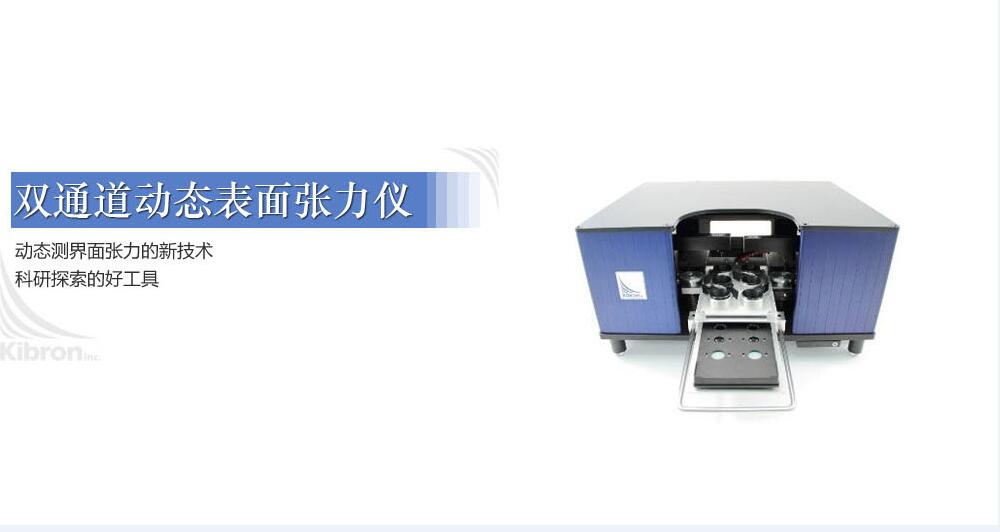合作客户/
拜耳公司 |
同济大学 |
联合大学 |
美国保洁 |
美国强生 |
瑞士罗氏 |
相关新闻Info
推荐新闻Info
-
> 界面流变仪可以测量液体表面张力吗?界面流变仪与界面张力仪区别解析
> 测量表面张力/界面张力的仪器有哪些?怎么选
> PG脱酰胺添加量对玉米醇溶蛋白气-水动态表面张力的影响
> 芬兰Kibron表面张力仪使用指南【专业版】
> 平面流动皂膜表面张力系数、厚度和流动速度实验装置及测量方法(二)
> 平面流动皂膜表面张力系数、厚度和流动速度实验装置及测量方法(一)
> 单层膜界面上亚微米颗粒表面张力阻力系数修正——颗粒在单层膜上的阻力系数
> 单层膜界面上亚微米颗粒表面张力阻力系数修正——膜的性质及实验方法
> 单层膜界面上亚微米颗粒表面张力阻力系数修正——摘要、引言
> Kibron超微量天平在生物医药研究领域应用实例
蛋白质外聚物中多糖的比例——结论、致谢!
来源:上海谓载 浏览 2177 次 发布时间:2021-10-12
四、结论
油和/或 Corexit 的存在会导致 EPS 的蛋白质:多糖比率更高,并在中胚层实验中降低 SFT。 在这些实验中,SFT 与 蛋白质:具有负斜率的 EPS 多糖。 当开阔的海洋 水域和两种不同的沿海水处理进行了比较, 蛋白质趋势:多糖为 CEWAF > DCEWAF > WAF ≥ Control 并且对于 SFT,它是相反的, CEWAF < DCEWAF < WAF ≤ 对照。 因此,SFT 与胶体 EPS 中的蛋白质:多糖比率成反比。
当中宇宙水柱的不同尺寸分数为 相比之下,我们发现 EPS 胶体可以降低 SFT 蛋白质:多糖比例,表明有效的生物乳化 蛋白质的容量。 粒子滤波中 SFT 的比较 分数 (< 0.45 μm) 和 EPS 胶体分数 (< 0.45 μm 和 > 3 kDa),对于真正溶解的部分 (< 3 kDa),它是 表明只有前两个包含 EPS 的部分具有容量 以降低 SFT,而 < 3 kDa 级分显示与以下相同的 SFT 纯海水或只有真正溶解有机碳的海水。
显微镜技术(即 CLSM 和 SEM)证实,正如预测的那样,蛋白质主要在空气 - 水界面富集, 强烈影响空气/水界面处的 SFT 治疗。 这些技术还可视化了不同的聚集体尺寸 和它们的分散,以及聚集体形成的重要性 通过阴离子EPS组分部分之间的Ca2+"桥接"。 SFT 可能会发生微小的变化,与蛋白质:多糖比率的变化相吻合,这可能是 pH 值变化的原因(十分之一) 单位),如 EPS 模型化合物所示,这可能在 CMC 周围最为突出。 此外,我们表明蛋白质和酸性多糖的 EPS 模型成分比 Corexit 导致海水中胶束的自组装甚至 当这些成分的浓度很低时。 这个 表明 EPS 在形成方面与 Corexit 相同或更有效 乳液。 然而,关于相互作用的更系统的研究 不同组件的不同组合,以及更多型号 单独的化合物,可能需要更多地阐明在我们的中宇宙实验中观察到的复杂性。
致谢
这项研究得到了墨西哥湾的资助 支持名为 ADDOMEx 的联盟研究的研究计划 (微生物对分散剂和油的聚集和降解 Exopolymers) 联盟。 原始数据可以在海湾找到 墨西哥研究倡议信息和数据合作组织 (GRIIDC) 在网址 https://doi.org/10.7266/N7PK0D64; https://doi.org/10。 7266/N78P5XZD; https://doi.org/10.7266/N74X568X; https://doi. org/10.7266/N79W0D1K。
参考
Angarska, J.K., Dimitrova, B.S., Danov, K.D., Kralchevsky, P.A., Ananthapadmanabhan, K.P., Lips, A., 2004. Detection of the hydrophobic surface force in foam films by measurements of the critical thickness of the film rupture. Langmuir 20, 1799–1806. https://doi.org/10.1021/la035751.
Bopp, R., Santschi, P.H., Li, Y.-H., Deck, B.L., 1981. Biodegradation and gas exchange of gaseous alkanes in model estuarine ecosystems. Org. Geochem. 3, 9–14. https://doi. org/10.1016/0146-6380(81)90007-3.
Bretherton, L., Williams, A.K., Genzer, J., Hillhouse, J., Kamalanathan, M., Finkel, Z.V., Quigg, A., 2018. Physiological response of 10 phytoplankton species exposed to Macondo oil and Corexit. J. Phycol. 54 (3), 317–328. https://doi.org/10.1111/jpy. 12625.
Burd, A.B., Jackson, G.A., 2009. Particle aggregation. Annu. Rev. Mar. Sci. 1, 65–90. https://doi.org/10.1146/annurev.marine.010908.163904.
Cai, Z., Gong, Y., Liu, W., Fu, J., O'Reilly, S.E., Hao, X., Zhao, D., 2016 Aug 15. 2016. A surface tension based method for measuring oil dispersant concentration in seawater. Mar. Pollut. Bull. 109 (1), 49–54. https://doi.org/10.1016/j.marpolbul.2016.06.028.
Chester, R., 1990. Marine Geochemistry. Unwin Hyman, Ltd, London. Chin, W.-C., Orellana, M.V., Verdugo, P., 1998. Spontaneous assembly of marine dissolved organic matter into polymer gels. Nature 391, 568–572. https://doi.org/10. 1038/35345.
Chiu, M.-H., Garcia, S.G., Hwang, B., Claiche, D., Sanchez, G., Aldayafleh, R., Tsai, S.-M., Santschi, P.H., Quigg, A., Chin, W.-C., 2017. Corexit, oil and marine microgels. Mar. Pollut. Bull. 122, 376–378. https://doi.org/10.1016/j.marpolbul.2017.06.077.
da Cruz, G.F., Angolini, C.F.F., dos Santos Neto, E.V., Loh, W., Marsaioli, A.J., 2010. Exopolymeric substances (EPS) produced by petroleum microbial consortia. J. Braz. Chem. Soc. 21 (8), 1517–1523. https://doi.org/10.1590/S0103- 50532010000800016.
Decho, A.W., 2000. Microbial biofilms in intertidal systems: an overview. Cont. Shelf Res. 20, 1257–1273. https://doi.org/10.1010/S0278-4343(00)00022-4.
Doyle, S.M., Whitaker, E.A., De Pascuale, V., Wade, T.L., Knap, A.H., Santschi, P.H., Quigg, A., Sylvan, J.B., 2018. Rapid formation of microbe-oil aggregates and changes in community composition in coastal surface water following exposure to oil and corexit. Front. Microbiol. 1–16. https://doi.org/10.3389/fmicb.2018.00689. Emerson, S., Hedges, J., 2008. Chemical Oceanography and the Marine Carbon Cycle. Cambridge University Press, Cambridge, UK. Ghosh, A.K., Bandyopadhyay, P., 2012. Polysaccharide-protein interactions and their relevance in food colloidsa. In: Intech Open Science, https://doi.org/10.5772/50561. Guo, L., Coleman Jr., C.H., Santschi, P.H., 1994. The distribution of colloidal and dissolved organic carbon in the Gulf of Mexico. Mar. Chem. 45, 105–119. https://doi. org/10.1016/0304-4203(94)90095-7.
Gutierrez, T., Shimmield, T., Haidon, C., Black, K., Green, D.H., 2008. Emulsifying and metal ion binding activity of a glycoprotein exopolymer produced by Pseudoalteromonas sp. Strain TG12. Appl. Environ. Microbiol. 4867–4876. https:// doi.org/10.1128/AEM.00316-08.
Han, X., Wang, Z., Chen, M., Zhang, X., Tang, C.Y., Wu, Z., 2017. Acute responses of microorganisms from membrane bioreactors in the presence of NaOCl: protective mechanisms of extracellular polymeric substances. Environ. Sci. Technol. 51, 3233–3241. https://doi.org/10.1021/acs.est.6b05475.
Hatcher, P.G., Obeid, W., Wozniak, A.S., Xu, C., Zhang, S., Santschi, P.H., Quigg, A., 2018. Identifying oil/marine snow associations in mesocosm simulations of the deep water horizon oil spill event using solid-state 13C NMR spectroscopy. Mar. Pollut. Bull. 126, 159–165. https://doi.org/10.1016/j.marpolbul.2017.11.004.
Hung, C.-C., Santschi, P.H., 2001. Spectrophotometric determination of total uronic acids in seawater using cation exchange separation and pre-concentration lyophilization. Anal. Chim. Acta 427, 111–117. https://doi.org/10.1016/S0003-2670(00)01196-X.
Hung, C.-C., Guo, L., Schultz, G., Pinckney, J.L., Santschi, P.H., 2003. Production and fluxes of carbohydrate species in the Gulf of Mexico. Glob. Biogeochem. Cycles 17 (2), 1055. https://doi.org/10.1029/2002GB001988. Kamalanathan, M., Schwehr, K.A., Bretherton, L.J., Genzer, J., Hillhouse, J., Xu, C., Williams, A., Santschi, P.H., Quigg, A., 2018. Diagnostic tool to ascertain marine phytoplankton exposure to chemically enhanced water accommodated fraction of oil using Fourier Transform infrared spectroscopy. Mar. Pollut. Bull. 130, 170–178. https://doi.org/10.1016/j.marpolbul.2018.03.027.
McClements, D.J., 2011. Edible nanoemulsions: fabrication, properties, and functional performance. Soft Matter 7, 2297–2316. https://doi.org/10.1039/C0SM00549E. Millero, F.J., 1996. Chemical Oceanography. CRC Press, Boca Raton, FL, pp. 469. Morris, D.L., 1948. Quantitative determination of carbohydrates with Dreywood's anthrone reagent. Science 107, 254–255.
Padday, J.F., Pitt, A.R., Pashley, R.M., 1975. Menisci at a free liquid surface: surface tension from the maximum pull on a rod. J. Chem. Soc., Faraday Trans. 1 71, 1919–1931. https://doi.org/10.1039/F19757101919.
Passow, U., Hetland, R.D., 2016. What happened to all of the oil? Oceanography 29, 88–95. https://doi.org/10.5670/oceanog.2016.73.
Pletikapic, G., Lannon, H., Murvai, U., Kellermayer, M.S.Z., Svetlicic, V., Brujic, J., 2014. Self-assembly of polysaccharides gives rise to distinct mechanical signatures in marine gels. Biophys. J. 107, 355–364. https://doi.org/10.1016/j.bpj.2014.04.065.
Prairie, J.C., Ziervogel, K., Camassa, R., McLaughlin, R.M., White, B.L., Dewald, C., Arnosti, C., 2015. Delayed settling of marine snow: Effects of density gradient and particle properties and implications for carbon cycling. Mar. Chem. 175, 28–38. https://doi.org/10.1016/j.marchem.2015.04.006.
Quigg, A., Passow, U., Chin, W.-C., Xu, C., Doyle, S., Bretherton, L., Kamalanathan, M., Williams, A.K., Sylvan, J.B., Finkel, Z.V., Knap, A.H., Schwehr, K.A., Zhang, S., Sun, L., Wade, T.L., Obeid, W., Hatcher, P.G., Santschi, P.H., 2016. The role of microbial exopolymers in determining the fate of oil and chemical dispersants in the ocean. Limnol. Oceanogr. Lett. 1, 3–26. https://doi.org/10.1002/lol2.10030.
Santschi, P.H., 2017. Texas A&M University Introduces Exopolymeric Substances as Agents in Enhancing the Self-Cleansing Capacity of Natural Waters. American Exopolymerics Science & Technology 25 feature article. http://www. paneuropeannetworks.com/special-reports/american-exopolymerics/. Sharqawy, M.H., Lienhard, J.H., Zubair, S.M., 2010. Thermophysical properties of seawater: a review of existing correlations and data. Desalin. Water Treat. 16, 354–380. https://doi.org/10.5004/dwt.2010.1079.
Smith, P.K., Krohn, R.I., Hermanson, G.T., Mallia, A.K., Gartner, F.H., Provenzano, E.K., Fujimoto, E.K., Goeke, N.M., Olson, B.J., Klenk, D.C., 1985. Measurement of protein using bicinchoninic acid. Anal. Biochem. 150, 76–85. https://doi.org/10.1016/0003- 2697(85)90442-7.
Sun, L., Xu, C., Zhang, S., Lin, P., Schwehr, K.A., Quigg, A., Chiu, M.-H., Chin, W.-C., Santschi, P.H., 2017. Light-induced aggregation of microbial exopolymeric substances. Chemosphere 181, 675–681. https://doi.org/10.1016/j.chemosphere.2017. 04.099.
Tako, M., 2015. The Principle of Polysaccharide Gels. Adv. Biosci. Biotechnol. 6, 22–36. https://doi.org/10.4236/abb.2015.61004.
Tcholakova, S., Denkov, N.D., Lips, A., 2008. Phys. Chem. Chem. Phys. 10, 1608–1627. Tsai, S.M., Bangalore, P., Chen, E.Y., Lu, D., Chiu, M.H., Suh, A., Gehring, M., Cangco, J.P., Garcia, S.G., Chin, W.C., 2017. Graphene-induced apoptosis in lung epithelial cells through EGFR. J. Nanopart. Res. 19, 262–275. https://doi.org/10.1007/s11051- 017-3957-9.
Verdugo, P., Santschi, P.H., 2010. Polymer dynamics of DOC networks and gel formation in seawater. Deep Sea Res. II 57, 1486–1493. https://doi.org/10.1016/j.dsr2.2010. 03.002.
Verdugo, P., Alldredge, A.L., Azam, F., Kirchman, D.L., Passow, U., Santschi, P.H., 2004. The oceanic gel phase: a bridge in the DOM-POM continuum. Mar. Chem. 92, 67–85. https://doi.org/10.1016/j.marchem.2004.06.017.
Wade, T.L., Sweet, S.T., Sericano, J.L., Guinasso Jr., N., Diercks, A.-R., Highsmith, R.C., Asper, V.L., Joung, D., Shiller, A.M., Lohrenz, S.E., Joye, S.B., 2011. Analyses of water samples from the deepwater horizon oil spill: documentation of the sub-surface plume. In: Liu, Y. (Ed.), Monitoring and Modeling the Deepwater Horizon Oil Spill: A Record-Breaking Enterprise, Geophysical Monograph Series. Vol. 195. AGU, Washington, D. C, pp. 77–82.
Wade, T.L., Morales-McDevitt, M., Bera, G., Shi, D., Sweet, S., Wang, B., Gold-Bouchot, G., Quigg, A., Knap, A.H., 2017. A method for the production of large volumes of WAF and CEWAF for dosing mesocosms to understand marine oil snow formation. Marine Heliyon 3, e00419. https://doi.org/10.1016/j.heliyon.2017.e00419.
Wang, L., Yoon, R.-H., 2004. Hydrophobic forces in the foam films stabilized by sodium dodecyl sulfate: effect of electrolyte. Langmuir 20, 11457–11464. https://doi.org/10. 1021/la048672g.
Warszynski, P., Barzyk, W., Lunkenheimer, K., Fruhner, H., 1998. Surface tension and surface potential of Na n-dodecyl sulfate at the air-solution interface: model and experiment. J. Phys. Chem. B 102, 10948. https://doi.org/10.1021/jp983901r. Xu, C., Zhang, S.J., Chuang, C.Y., Miller, E.J., Schwehr, K.A., Santschi, P.H., 2011. Chemical composition and relative hydrophobicity of microbial exopolymeric substances (EPS) isolated by anion exchange chromatography and their actinide-binding affinities. Mar. Chem. 126, 27–36. https://doi.org/10.1016/j.marchem.2011.03.004.
Xu, C., Zhang, S., Beaver, M., Wozniak, A., Obeid, W., Lin, Y., Wade, T.L., Schwehr, K.A., Lin, P., Sun, L., Hatcher, P.G., Kaiser, K., Chin, W.-C., Chiu, M.-H., Knap, A., Kopp, K., Quigg, A., Santschi, P.H., 2018a. Decreased sedimentation efficiency of petro-carbon and non-petro-carbon caused by water-accommodated-fraction (WAF) and Corexitenhanced water-accommodated-fraction (CEWAF) in a coastal microbial communityseeded mesocosmt. Mar. Chem. https://doi.org/10.1016/j.marchem.2018.09.002.
(In press). Xu, C., Zhang, S., Beaver, M., Lin, P., Sun, L., Doyle, S.M., Sylvan, J.B., Wozniak, A., Hatcher, P.G., Kaiser, K., Yan, G., Schwehr, K.A., Lin, Y., Wade, T.L., Chin, W.-C., Chiu, M.-H., Quigg, A., Santschi, P.H., 2018b. The role of microbially-mediated exopolymeric substances (EPS) in regulating Macondo oil transport in a mesocosm experiment. Mar. Chem. https://doi.org/10.1016/j.marchem.2018.09.005. (In press).
Zäncker, B., Bracher, A., Röttgers, R., Engel, A., 2017. Variations of the organic matter composition in the sea surface microlayer: a comparison between open ocean, coastal, and upwelling sites off the Peruvian coast. Front. Microbiol. 8, 2369. https:// doi.org/10.3389/fmicb.2017.02369.
